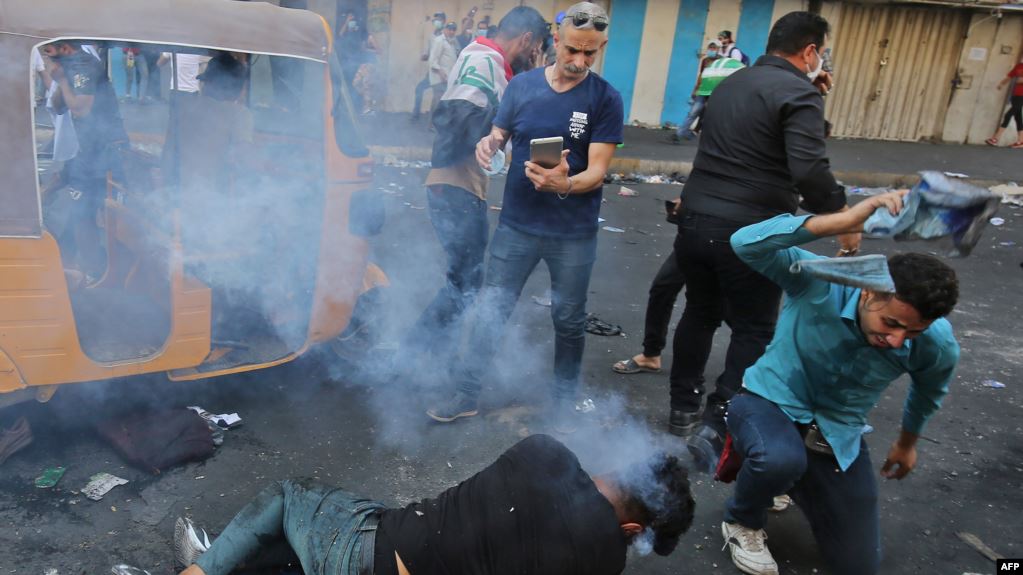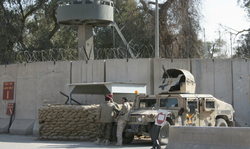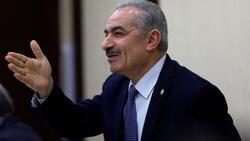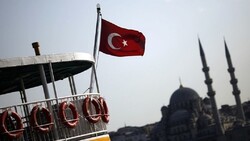WSJ highlights similarities between the demonstrations of Iraq and Ukraine

Shafaq News/ After more than 15 years of changing the regime in Iraq—the exercise of Iraqi freedom suddenly confronts the Iranian regime with a serious strategic challenge—both to its ambitions for regional hegemony and its own internal legitimacy, The Wall Street Journal said in a report.
Political protests have convulsed Iraq for the past month. Those protests are directed not only at corruption in Baghdad but also, increasingly, at what Iraqis perceive as Tehran’s violent efforts to suppress their dissent.
The report explains that this debacle for the Iranian leadership is entirely of its own making. When Iraqis first took to the streets in early October, their complaints were overwhelmingly inward-looking, rooted in the systemic failure of Baghdad’s successive elected governments to provide basic services and responsive government. Especially now with the threat from Islamic State receding, public rage at the corruption, nepotism and cronyism in Baghdad has exploded.
To a younger, web-connected generation, the failure to translate Iraq’s extraordinary wealth into general prosperity is simultaneously inexplicable and inexcusable. How is it possible that OPEC’s second-largest oil producer cannot provide reliable electricity? Or that the “land of the two rivers” doesn’t have sufficient potable water?
In response to these popular demands for reform, the Iranian government has pressured its Iraqi counterpart to respond forcefully. Supreme Leader Ali Khamenei described Iraq’s protests as “riots” that need to be “dealt with.” On Oct. 2, Maj. Gen. Qassem Soleimani, commander of Iran’s Quds Force, reportedly chaired a meeting in place of the Iraqi prime minister, where Gen. Soleimani pressed for a crackdown. Iranian-backed militias have repeatedly opened fire on demonstrators, killing 250 and wounding thousands. Defying public demands, Gen. Soleimani prevented the Iraqi prime minister from resigning.
Perhaps it’s unsurprising that Iran’s leaders have reacted so ferociously to Iraqi protests—and not only because Tehran protects the extraordinary access and influence it enjoys in Baghdad. Much as Vladimir Putin perceived the 2014 democratic uprising in Ukraine as auguring a threat to his own authoritarian rule in Moscow, Tehran fears that Iranians might draw inspiration if mass protests next door—by a majority-Shiite population—succeed in ushering in change, the report added.
Also like Mr. Putin, who could not conceive that Ukraine’s uprising was a homegrown phenomenon fueled by anger with corruption rather than a foreign plot, Iran’s leaders have insisted that the demonstrations in Iraq are a conspiracy cooked up by Israel and the U.S. Their accusation has further alienated and enraged ordinary Iraqis.
Tehran’s actions and rhetoric over the past month have inadvertently triggered a deep strain of Iraqi nationalism. These predominantly Shia protesters are waking up to Iran’s exploitation of their sectarian affinity as it uses Iraqi soil as a battleground for its wars and dumping ground for cheaper Iranian products to the detriment of Iraqi local enterprise. No wonder one of the most popular slogans on the streets of Baghdad today is “Iraq is Free; Iran, get out!”
These protests are unprecedented in modern Iraqi history. Spontaneous due to resentment of the entire political class, began even to the clergy.
The Iranian Foreign Ministry called on citizens not to travel to Iraq and postpone their flights in light of violent protests, especially in southern cities where there are religious shrines.





